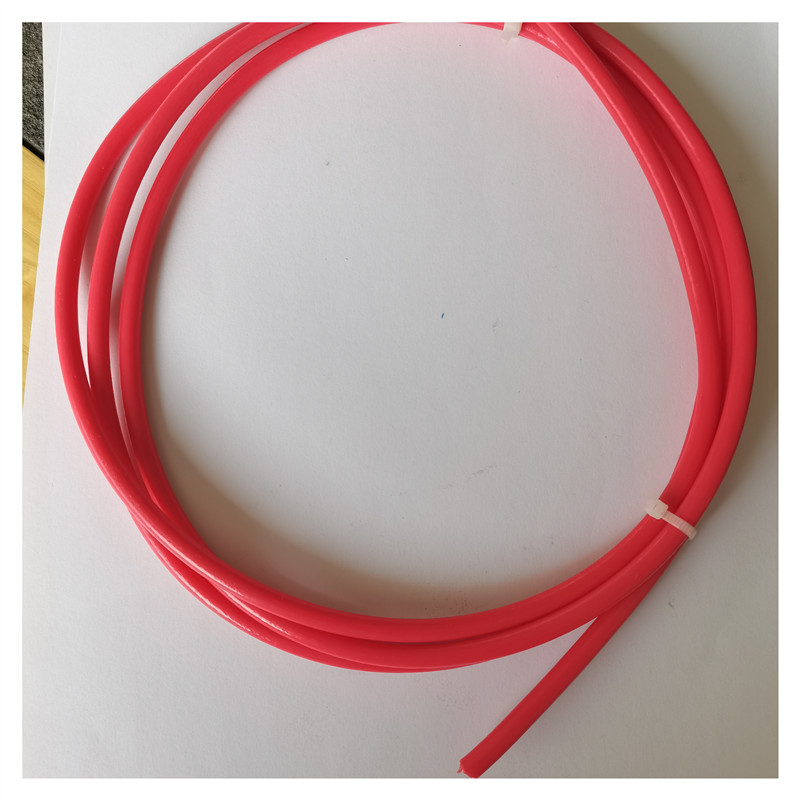Bei unternehmenskritischen Anwendungen in der Öl- und Gasindustrie, in Schiffssystemen, der industriellen Automatisierung oder in der Telekommunikationsinfrastruktur im Außenbereich ist die Integrität des Dichtungssystems eines Kabels nicht nur ein Konstruktionsdetail – sie ist ein entscheidender Faktor für langfristige Zuverlässigkeit. Ölbeständige, flüssigkeits- und wassergeschützte Kabel werden häufig zum Schutz empfindlicher Signalübertragungen vor rauen Umweltbedingungen eingesetzt. Doch selbst das fortschrittlichste Kabeldesign kann vorzeitig versagen, wenn die Dichtungsintegrität am Stecker oder am Anschlusspunkt beeinträchtigt ist.

Die Antikapillarkabeltechnologie soll das Eindringen von Flüssigkeiten durch die Kabelstruktur verhindern. Diese Flüssigkeiten – ob Öl, Wasser oder andere Industriechemikalien – können die elektrische Isolierung beeinträchtigen, Leiter korrodieren und die Signalübertragung stören.
Nachfolgend finden Sie eine vereinfachte Aufschlüsselung der Auswirkungen der Abdichtung auf die Kabelleistung:
| Parameter | Ohne wirksame Versiegelung | Mit der richtigen Versiegelung |
| Feuchtigkeitsdurchdringung | Bis zu 70 % höheres Risiko | Fast 0 % |
| Korrosionsrate | Erhöht sich um das 3- bis 5-fache | Kontrolliert |
| Signalverlust | Bis zu 40 % Abbau | <5 % Abbau |
| Wartungshäufigkeit | Alle 6-12 Monate | Alle 24-36 Monate |
Wie oben gezeigt, verlängert eine geeignete Dichtungsstrategie direkt die Lebensdauer und verbessert die Systemzuverlässigkeit.
Sogar ein High-Spec Wasserblockiertes Kabel kann seinen Schutz verlieren, wenn ungeeignete Anschlusspraktiken angewendet werden. Nachfolgend sind einige häufige Ursachen aufgeführt, die bei Feldinspektionen festgestellt wurden:
Diese Probleme sind besonders kritisch in Industriesystemen, in denen Kabel ständigen Vibrationen, Druckschwankungen oder chemischen Einflüssen ausgesetzt sind.
Um die Dichtleistung aufrechtzuerhalten und die Wirksamkeit zu maximieren Ölbeständiges Antikapillarkabel, beachten Sie die folgenden Design- und Installationsrichtlinien:
Verwenden Sie Steckverbinder mit Schutzart IP67 oder höher und integrierten Dichtungen und Dichtmanschetten. So wird sichergestellt, dass die Abdichtung nicht ausschließlich von externen Materialien abhängt.
Befolgen Sie die Anweisungen des Herstellers zum Abisolieren genau. Normalerweise sollten nicht mehr als 10–20 mm des Außenmantels freiliegen. Dadurch wird das Eindringen von Flüssigkeiten minimiert.
Verwenden Sie kompatible Dichtmittel oder Gele, die speziell für flüssigkeitsgeblockte Kabel entwickelt wurden. Vermeiden Sie Produkte auf Silikonbasis, da diese in ölhaltigen Umgebungen ihre Funktion beeinträchtigen können.
Schrumpfschläuche mit Klebstoffbeschichtung bieten eine zusätzliche Barriere gegen das Eindringen von Feuchtigkeit und Öl.
Führen Sie an fertigen Baugruppen hydrostatische Tests oder Immersionstests durch, um vor dem Einsatz sicherzustellen, dass keine Mikrolecks vorhanden sind.
Um Ingenieuren eine fundierte Entscheidung zu ermöglichen, vergleicht die folgende Tabelle gängige Dichtungsmethoden und ihre Wirksamkeit unter verschiedenen Bedingungen:
| Versiegelungsmethode | Typische IP-Schutzart | Feuchtigkeitsbeständigkeit | Ölbeständigkeit | Empfohlene Verwendung |
| Standard-Crimpstecker | IP44 | ★★☆☆☆ | ★☆☆☆☆ | Bedienfelder für den Innenbereich |
| Stecker + Schrumpfdichtung | IP65 | ★★★★☆ | ★★★☆☆ | Allgemeine industrielle Verwendung |
| Flüssigkeitsbeständige Dichtung + Geldichtung | IP67 | ★★★★★ | ★★★★☆ | Telekommunikation im Außenbereich, Marine |
| Doppeldichtungssystem mit Verguss | IP68 | ★★★★★ | ★★★★★ | Unterwasser, Öl und Gas |
Eine Verschlechterung der Dichtung ist nicht immer sofort sichtbar. Regelmäßige Inspektionen und vorausschauende Wartung helfen, frühzeitige Anzeichen zu erkennen, bevor es zu Ausfällen kommt:
Sichtprüfungen: Achten Sie auf Risse, Schwellungen oder Verfärbungen rund um die Anschlussdichtungen.
Feuchtigkeitssensoren: Eingebettete Feuchtigkeitssensoren können Bediener warnen, wenn in Anschlusskästen ein Eindringen von Feuchtigkeit erkannt wird.
Isolationswiderstandsprüfung: Ein Abfall von mehr als 10 % über den Basiswert weist auf einen möglichen Dichtungsfehler hin.
Infrarot-Thermografie: Heiße Stellen in der Nähe von Anschlüssen können auf das Eindringen von Flüssigkeiten und Korrosion im Inneren hinweisen.
Berücksichtigen Sie bei der Auswahl von wassergeschützten Kabeln oder ölbeständigen Antikapillarkabeln für kritische Systeme die folgenden technischen Faktoren, um die Lebensdauer der Dichtung zu optimieren:
| Faktor | Empfohlener Bereich | Auswirkungen auf das Leben der Robben |
| Betriebstemperatur | -40 °C bis +90 °C | Verhindert Dichtungsermüdung |
| Kabelbiegeradius | >10× Außendurchmesser | Reduziert mechanische Belastungen |
| Zugkraft am Abschluss | <50 N | Verhindert eine Verschiebung der Dichtung |
| Anschlussdrehmoment | Gemäß Herstellerspezifikation | Sorgt für eine gleichmäßige Kompression |
Die Branche verlagert sich auf Hybridlösungen, die Flüssigkeit blockiertes Kabel mit intelligenten Dichtungsmaterialien – wie hydrophoben Gelen, selbstheilenden Elastomeren und nanobeschichteten Steckerschnittstellen. Diese Innovationen können die Kabellebensdauer im Vergleich zu herkömmlichen Dichtungsmethoden um bis zu 40 % verlängern.
Durch die Implementierung dieser Technologien sowie durch strenge Installations- und Wartungspraktiken wird sichergestellt, dass die Investition in leistungsstarke Antikapillarkabel auch unter den anspruchsvollsten Bedingungen maximale Zuverlässigkeit auf lange Sicht bietet.
Die Leistung eines ölbeständigen, kapillarhemmenden oder wassergeschützten Kabels ist nur so stark wie seine schwächste Stelle – und das ist in den meisten Fällen der Anschluss- oder Klemmbereich. Durch die Kombination geeigneter Installationstechniken, hochwertiger Dichtungsmaterialien und regelmäßiger Überwachung können Sie die Dichtungsintegrität aufrechterhalten, Wartungskosten senken und eine kontinuierliche Systemleistung auch in rauen Umgebungen sicherstellen.